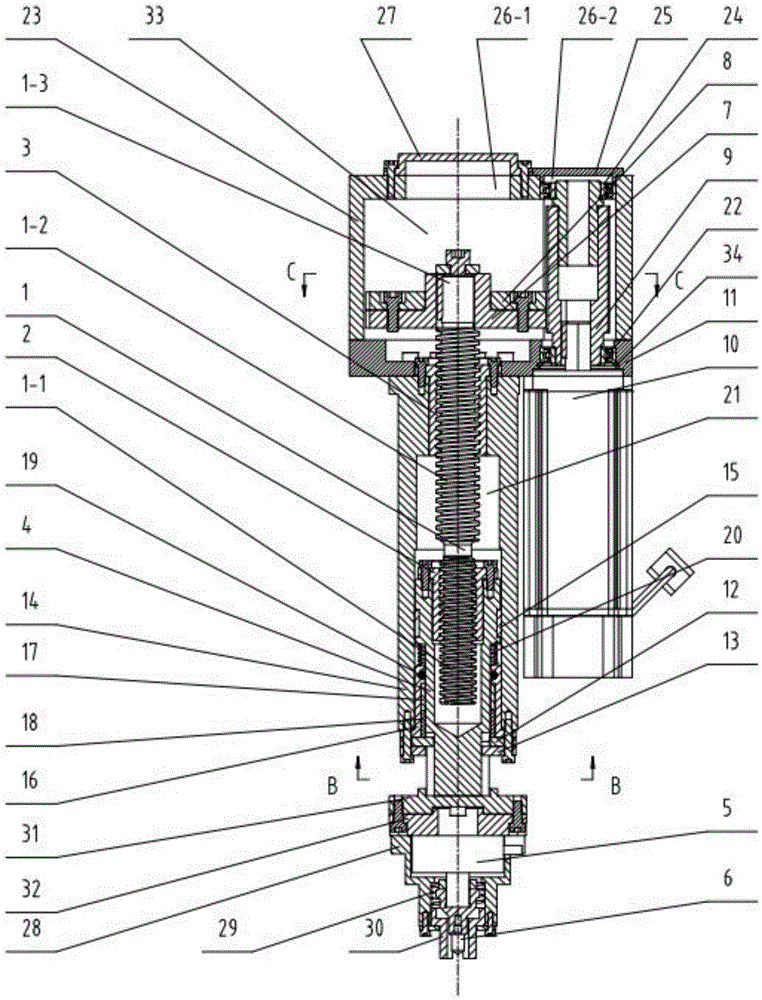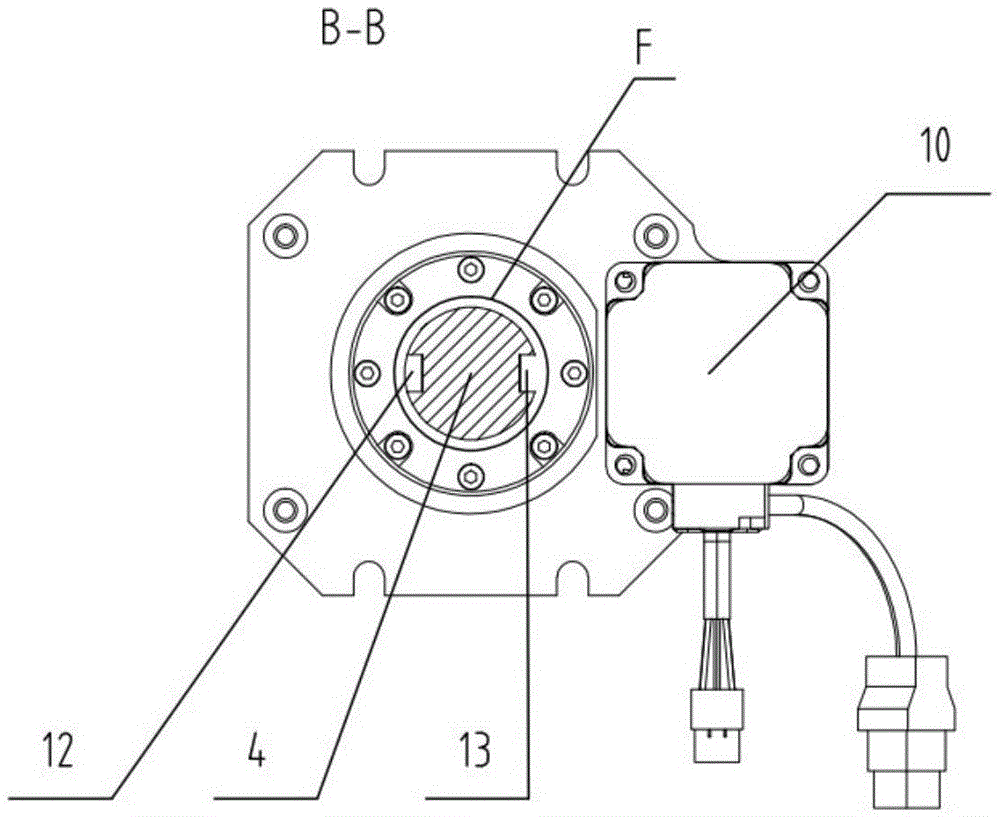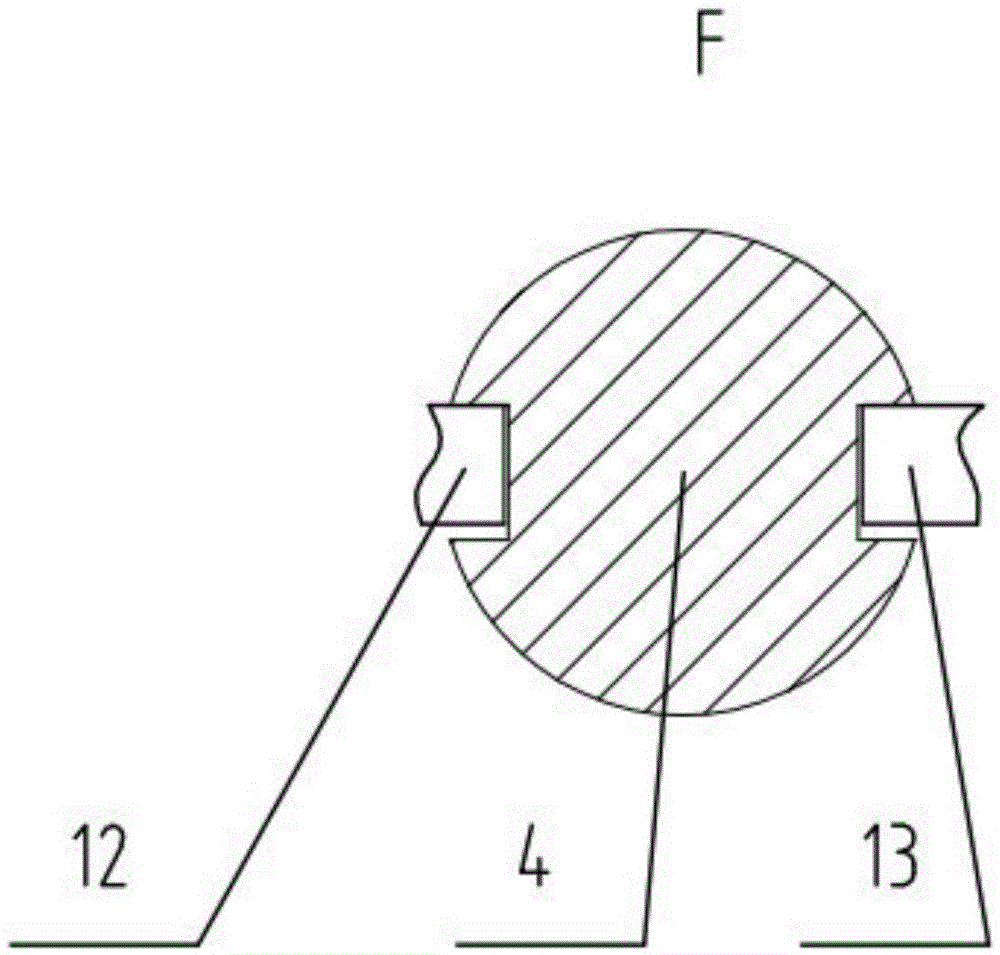Differential screw hardness measuring device
A technology of differential screw and measuring device, which is applied in the direction of testing material hardness, etc. It can solve the problems of reduced screw transmission accuracy, reduced thread strength, and large volume, and achieves the effects of solving strength and service life, increasing reliability, and simple structure
- Summary
- Abstract
- Description
- Claims
- Application Information
AI Technical Summary
Problems solved by technology
Method used
Image
Examples
Embodiment Construction
[0051] Specific embodiments of the present invention are provided below in conjunction with the accompanying drawings.
[0052] Such as figure 1 As shown, the present invention includes a force sensor 5, a pressure head 6 and a motor 10, and the lead of the first thread 1-1 at the lower end of the stud 1 is P 1 , the lead of the second thread 1-2 at the upper end of stud 1 is P 2 , there is a first nut 2 outside the first thread 1-1, the first nut 2 is fixedly connected to the upper end of the inner sleeve 4, and the lower end of the inner sleeve 4 is fixedly connected to the upper end of the force sensor 5 through the connection plate 31 and the transition plate 32 , the lower end of the force sensor 5 is fixedly connected with the pressure head 6, and there is a second nut 3 outside the second thread 1-2, and the second nut 3 is fixedly connected with the upper end of the outer sleeve 14, and the stud 1, the first The nut 2 and the second nut 3 form a differential screw, s...
PUM
 Login to View More
Login to View More Abstract
Description
Claims
Application Information
 Login to View More
Login to View More - R&D
- Intellectual Property
- Life Sciences
- Materials
- Tech Scout
- Unparalleled Data Quality
- Higher Quality Content
- 60% Fewer Hallucinations
Browse by: Latest US Patents, China's latest patents, Technical Efficacy Thesaurus, Application Domain, Technology Topic, Popular Technical Reports.
© 2025 PatSnap. All rights reserved.Legal|Privacy policy|Modern Slavery Act Transparency Statement|Sitemap|About US| Contact US: help@patsnap.com



